What to be on the lookout for…
Salt Marsh Caterpillars
Salt marsh caterpillars are occasional pests but can do some real damage on onions and brassicas. Broadleaf weeds are the normal host plants, but larvae commonly disperse from these late in the growing season to damage vegetable and field crops. Other vegetable hosts include asparagus, bean, beet, carrot, celery, corn, lettuce, pea, tomato, turnip, and probably others.
Larvae are defoliators. Young larvae feed in clusters and skeletonize foliage. Older larvae are solitary and eat large holes in leaf tissue. They tend to be more damaging to fall crops. Sprays of Bacillus thuringiensis (Bt) or spinosad will control them.
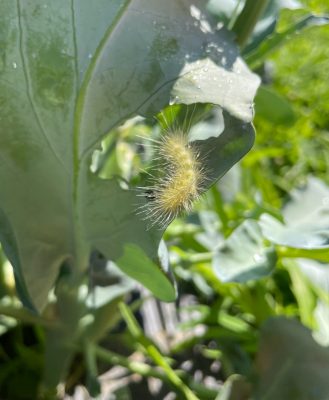
Fulvia Leaf Mold on High Tunnel Tomatoes
The recent hot, humid weather in combination with tomato plants rapidly growing into dense plantings creates the perfect environment for fungal diseases like leaf mold. It first appears as yellow or pale green spots that are not defined by leaf veins or margins. On the underside of leaves, olive green mold spots also forms. In more extreme cases, blossom and fruit infections can occur. Infected blossoms will turn black and fall off. For fruit, the stem will turn black and the leaf mold will progress to cause sunken, dry and leathery fruit rot.
To control leaf mold, it is critical to improve airflow and reduce humidity by venting, pruning, and checking placement of fans. Removing infected foliage can slow the spread of disease from leaf to leaf and plant to plant. At the end of the crop cycle, remove and destroy all plant residue. Sanitize the tunnel before the next season and start with certified, disease-free seed or treat seed with hot water bath.
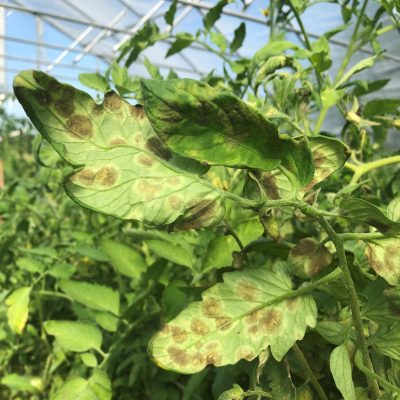
Squash Stem Splitting
Cucurbit crops are susceptible to stem splitting under two main conditions. First, if young plants experience cold temperatures when spring temperatures dip below 60°F for several days, cold damage can cause the stem to split on one side. Stem splitting can also be a result of sudden, rapid growth resulting from high temperatures, increased irrigation or high fertility. In severe cases, the split can lead to wilted, snapped or broken stems that are fatal to the plant. Growers should consider applying a fungicide or bactericide so that the damaged plant tissues don’t become infected in the healing process.

Sweet Corn Pests - Trap Count Update
| Location | CEW (avg per night) | ECB - NY | ECB - IA | ECB - III | FAW |
| Glastonbury A | - | 0 | 0 | 0 | - |
| Glastonbury B | 1.3 | 0 | 0 | 0 | 2 |
| Berlin | 0.5 | - | - | - | - |
| Shelton | 2.5 | 0 | 0 | 0 | 0 |
See the New England Vegetable Management Guide for detailed management strategies for all sweet corn insect pests.
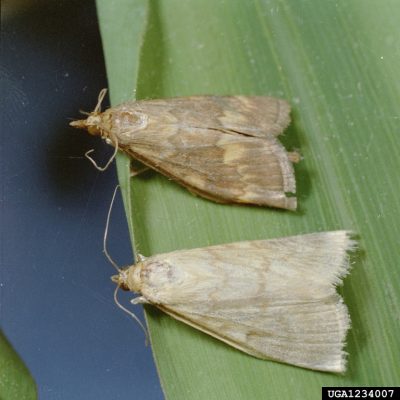
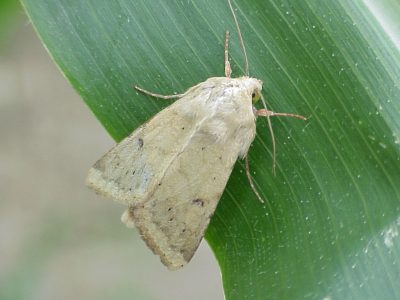
Photo: David Handley
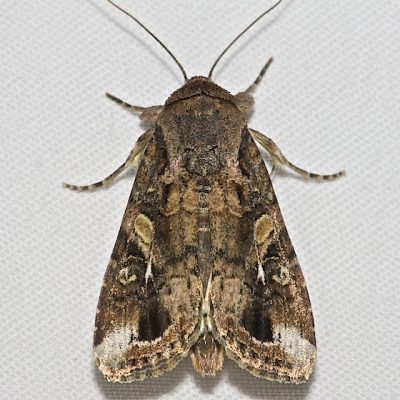
New Resource: Managing Flood Risks on Farms
Our team at UConn Extension has put together a factsheet to help you navigate flood risks on your farm. From preparing before a big storm to dealing with the aftermath, this short guide covers practical steps to help protect your crops, soil, and equipment. With more extreme weather events happening across the region, it's a good time to think about how to reduce damage and recover safely if flooding occurs.
Continue to be on the lookout for...
Striped and Spotted Cucumber Beetles
Brassica and Solanaceous Flea Beetles
Small Farm Innovations
Project Forms
Due: July 15th
Students in the UConn College of Engineering and College of Agriculture, Health and Natural Resources want to help farmers make their infrastructure and environmental impact ideas become a reality.
Must be a production farmer located in Connecticut with at least 1 year of production experience operating their own farm business.
Submit your application for the Small Farm Innovations Project today!
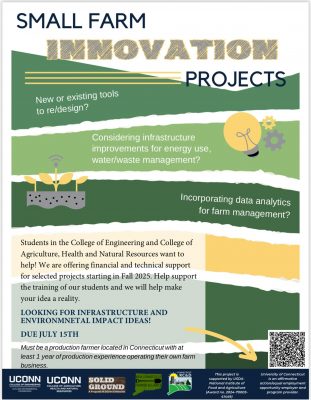
Want the New England Vegetable Management Guide and/or Northeast Vegetable and Strawberry Pest ID Guide at your fingertips?
Stay in touch with us
- Share what you see: We're here to assist with identification, management strategies, and guidance on best practices. Send us a photo/message via text at 959-929-1031.
- Facebook Group: UConn Extension moderates a private Facebook group specifically for commercial vegetable producers. It is a space to share photos of insects and diseases you find in your fields, ask questions, share ideas, and stay engaged with growers across the state. Join the "UConn Extension - Vegetable IPM" Facebook Group
- Schedule a consultation: Would you benefit from meeting with an Extension Specialist at your farm to provide insight on pest or disease identification, management strategies, and more? If so, please contact our Vegetable Extension Specialist, Shuresh Ghimire, to setup a farm visit. Contact him at shuresh.ghimire@uconn.edu or 860-870-6933.
Contact Information
Shuresh Ghimire, Vegetable Extension Specialist: shuresh.ghimire@uconn.edu
Nicole Davidow, Vegetable Extension Outreach Assistant: nicole.davidow@uconn.edu
Vegetable IPM Office Phone Number:
860-870-6933
Vegetable IPM Cell Phone Number:
959-929-1031 (feel free to text/iMessage photos)
Vegetable IPM Pest Alert Audio Recording:
860-870-6954
Thank you for reading!
This report was prepared by Nicole Davidow, Outreach Assistant, and Shuresh Ghimire, Commercial Vegetable Specialist, UConn Extension.

The information in this document is for educational purposes only. Any reference to commercial products, trade or brand names is for information only, and no endorsement or approval is intended. Always read the label before using any pesticide. The label is the legal document for product use. Disregard any information in this report if it is in conflict with the label. UConn Extension does not guarantee or warrant the standard of any product referenced or imply approval of the product to the exclusion of others which also may be available. The University of Connecticut, UConn Extension, College of Agriculture, Health and Natural Resources is an equal opportunity program provider.
